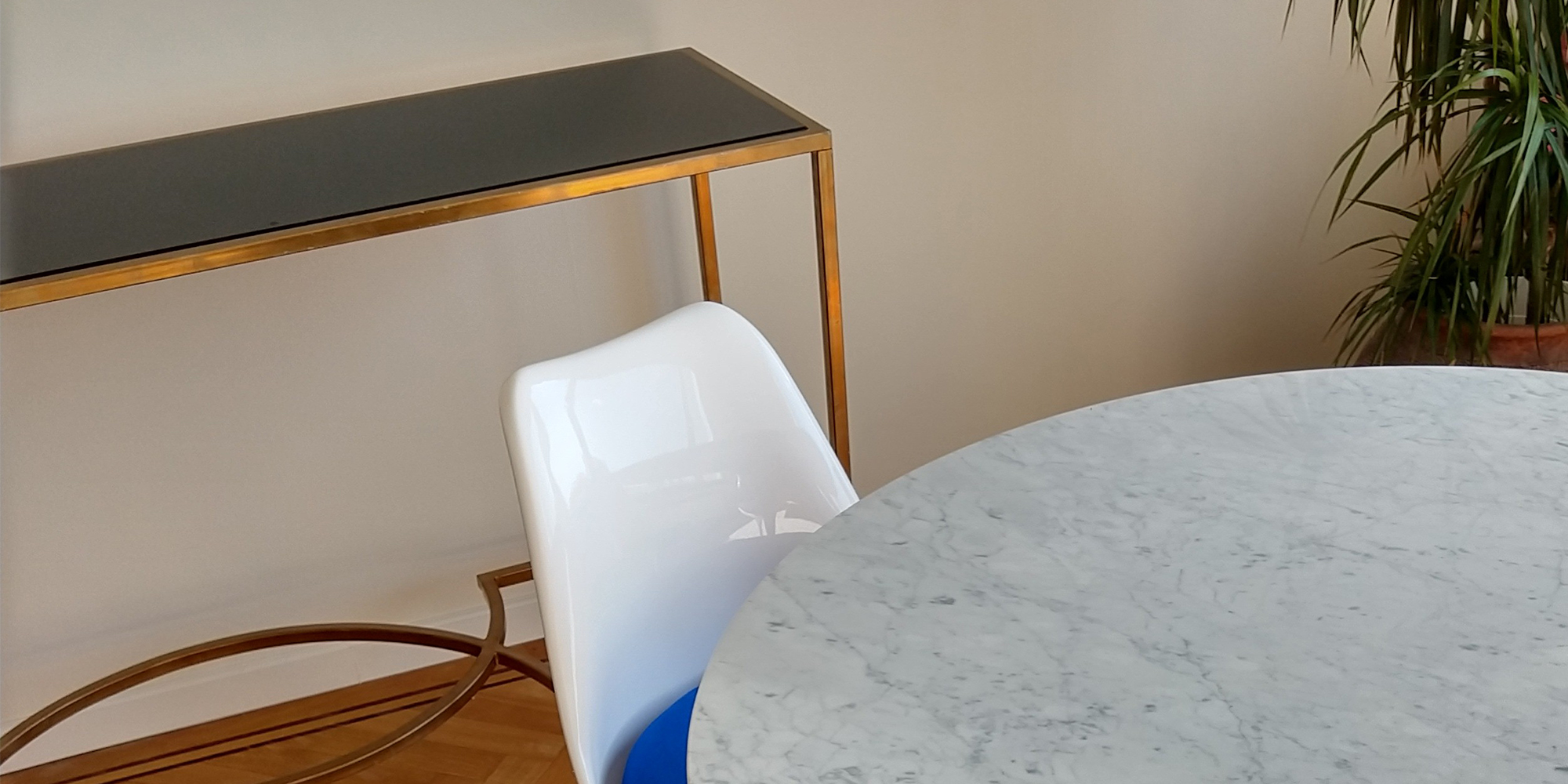A one time poster boy of modernist architecture in 1950s America (in 1956 he appeared on the cover of Time magazine) shortly after his death in 1961 (aged 51) Saarinen reputation took a nose dive. However, recently his legacy has been favourably reappraised and he’s now once again regarded as one of the twentieth century’s greatest American architects.
Born in Finland in 1910, he moved to America with his architect father (Eliel) and mother, a weaver, in 1930 and lived in Michigan, where his father was director at the Cranbrook Academy of Art. Saarinen himself would go on to study and teach at Cranbrook, where he worked with Charles and Ray Eames, Florence Knoll, amongst others. While at Cranbrook he worked with Charles Eames on moulded plywood prototype chairs that would eventually become the Eames LCW and DCW series.
After graduating he studied architecture at Yale, in Paris and in Finland, before starting work for his father. However, with the entry of America in the Second World War, Saarinen was drafted into the OSS the precursor of the CIA. At the OSS Saarinen headed a team of 40 designers who were tasked with creating propaganda and training manuals for troops and resistance fighters, and scale models of German towns to aid American bombing missions. While working for the OSS Saarinen was commissioned to design the war room at the White House. Of particular interest to us is that it was in this period that Saarinen started to work on the chair designs that would ultimately result in the Tulip and Womb chairs. (https://architizer.com/blog/eero-saarinen-spy/)
Working with new materials, principally plastic and metal, during the war, Saarinen would incorporate these in his postwar furniture designs. The Tulip chair, with its central pedestal, was conceived as a way of designing away the “slum of legs” associated with traditional designs. We can see the pedestal used in his architecture too, with elements of the Milwaukee War Memorial (1957) described as “glass cruciform floating on a pedestal”. (https://mam.org/info/details/warMemorial.php) The Tulip table was part of the “pedestal” group of furniture designed by Saarinen.
While the Milwaukee War Memorial shows a clear debt to Le Corbusier, the Saarinen Womb chair is less clearly influenced by Le Corbusier, and was designed to make the user feel safe and comfortable, as if sitting in their mother’s womb (although Florence Knoll had originally asked for ‘a chair that’s like a basket full of pillows…something I can curl up in’).
After his father’s death in 1950, Eero Saarinen started his own architectural practice. The 1950s were to be his “golden” decade, as his practice designed multiple award winning projects that would become icons of modern American architecture. One of the most iconic was the TWA Flight Centre at the JFK International Airport.
Another award winning commission was the General Motors Technical Center in Michigan. Completed in 1956, it was judged in 1986 as the most outstanding architectural project of its era by the American Institute of Architects (the award was itself the start of the rehabilitation of Saarinen’s reputation).
Following on from this success he secured commissions from other leading companies such as IBM and CBS, and universities, such as Noyes dormitory at Vassar University. By the close of the decade, Saarinen was the American modernist architect.
As stated at the start of this essay, despite, or because of, his stellar success in the 1950s, after his death Saarinen’s reputation and achievements came under sustained attack from theorists and architects, and from designers inspired by the radicalism of the new decade.
One criticism was that Saarinen’s designs lacked a coherent style or “vision”. While he was clearly influenced by modernists such as Le Corbusier and Mies van der Rohe (see the Miller House in Columbus) his own designs were more fluid and responsive to a client’s requirements, resulting in a more eclectic body of work. The fact that his most iconic work was completed for pillars of the establishment, such as General Motors, resulted in him being considered by student radicals as part of the problems besetting corporate and consumerist culture in 1960s America.
However, in recent years, Saarinen Tulip Tables have been reclaimed as a progenitor of Neo Futurism, an intellectual movement of architects, designers and artists who believe in eco-sustainable cities cross-pollinated by arts and technology to provide a better quality of life. (https://en.wikipedia.org/wiki/Neo-Futurists) Saarinen’s “eclectic” oeuvre is now hailed as being an innovative example of refusing to allow ideology to overcome placing the client, and wider needs, centre stage in architecture and urban design.
Saarinen’s rehabilitation also owes something to contemporary designer’s renewed appreciation of how revolutionary the design and manufacture of both the Womb chair and the Tulip pedestal group really were. They combined new lightweight industrial materials with organic shapes and required new production techniques.




